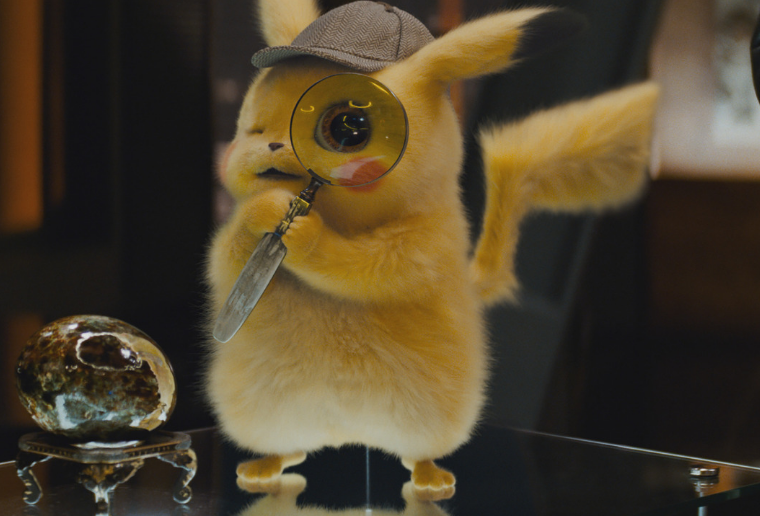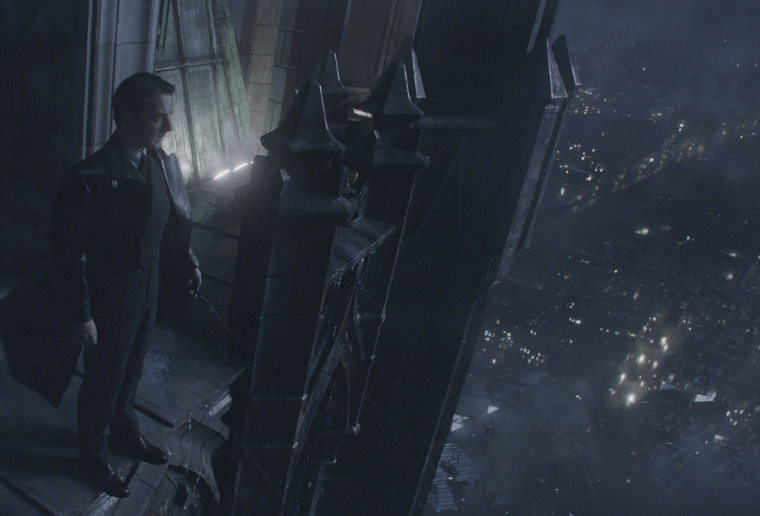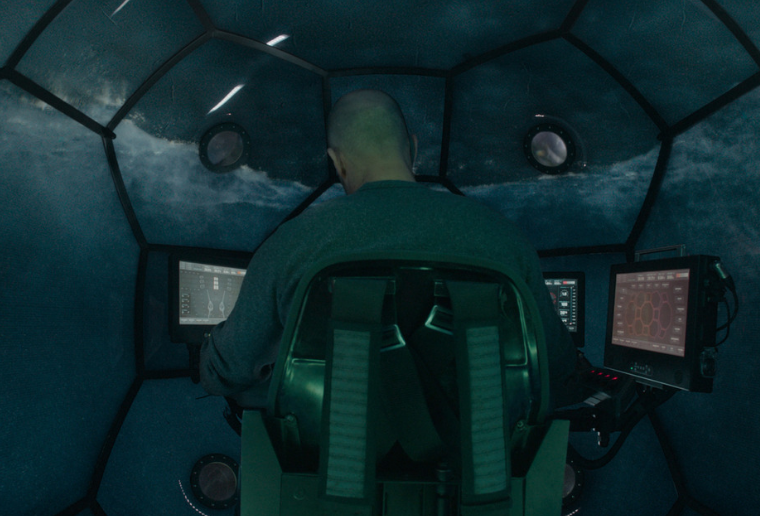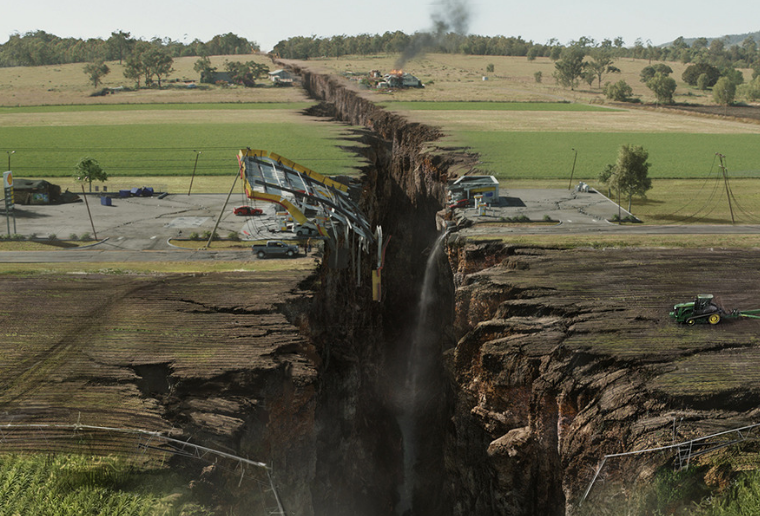Fantastic Beasts: The Secrets of Dumbledore Case Study
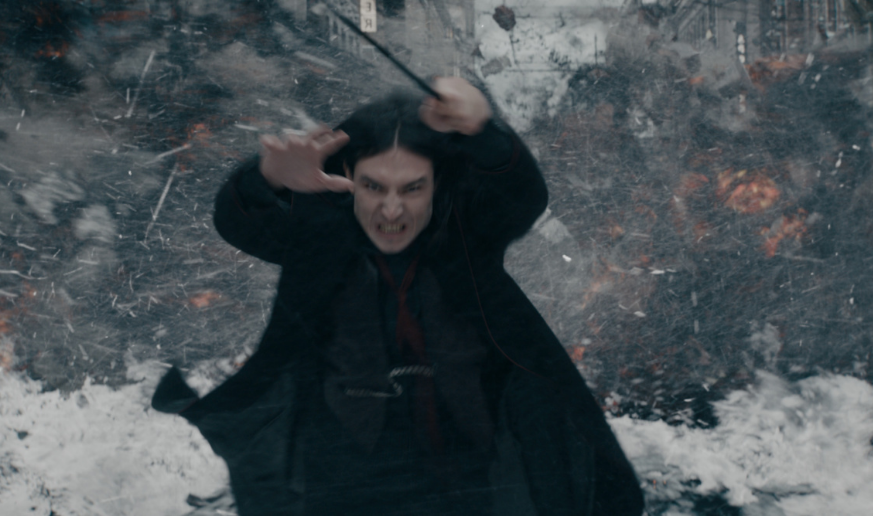
Case Study
Image Engine returns to the Fantastic Beasts series for a third time, bringing its visual effects magic to bear on Albus Dumbledore and Credence Barebone’s destructive battle in the streets of Berlin…And beyond.
View portfolio pageGraphorns, Thestrals, the Swooping Evil, the Chupacabra—Fantastic Beasts, the aptly named prequel series to Warner Bros. Harry Potter film series, is replete with creatures of all shapes and sizes. And whether it’s a tentacle-mouthed wildebeest or a skeletal equine, Image Engine has had a hand in taming such beasts via the expert application of visual effects right since the series’ first outing.
Image Engine returned to the series for a third time for Fantastic Beasts: The Secrets of Dumbledore. In this threequel, Professor Albus Dumbledore (Jude Law) must prevent the dark wizard Gellert Grindelwald (Mads Mikkelsen) from seizing control of the wizarding world. He recruits the services of Magizoologist Newt Scamander (Eddie Redmayne), who leads a team of wizards and witches on a dangerous mission against Grindelwald’s growing legion of followers.
Image Engine joined the coven to deliver 170 shots across seven sequences, but this time it was not charged with creature visual effects — or at least, not in the traditional sense. For Fantastic Beasts: The Secrets of Dumbledore, Image Engine needed to create enchanted pendants, wizard battles, and the destruction of a 1920s Berlin—all while still bringing a touch of its creature visual effects magic to bear.
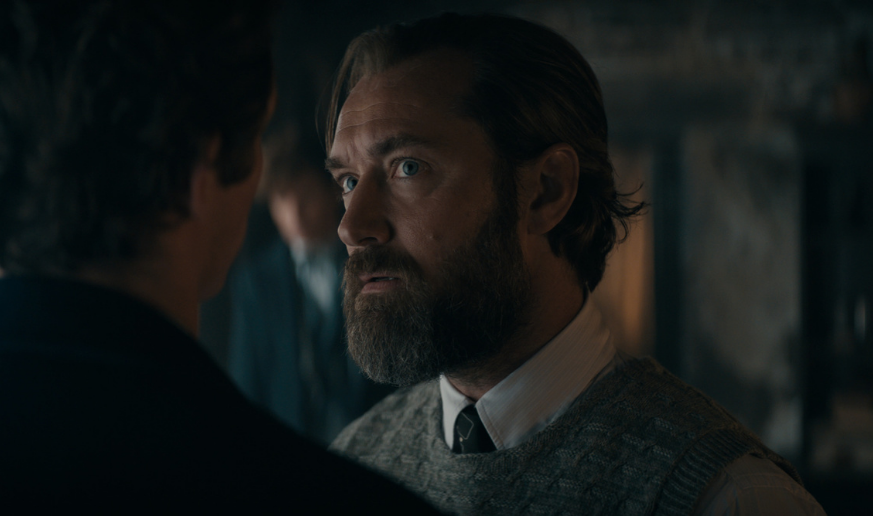
Destroying Berlin
The Crimes of Grindelwald is not just Image Engine’s third Fantastic Beasts movie, but the third supervised by Martyn Culpitt, visual effects supervisor at Image Engine.
“Over these three films, we’ve built a lot of trust with the Fantastic Beasts crew,” says Martyn. “For the first Fantastic Beasts in 2016, we showed we could tackle creatures. For the second film in 2018, Christian Manz (overall visual effects supervisor) challenged us with the film’s opening, in which the characters fly through a period New York in a sequence bursting with lightning and magic. For this third film, things have been taken up yet another notch, with a very technical sequence that sees Albus Dumbledore and Credence Barebone battling one another and tearing apart Berlin. Although it wasn’t your usual destruction visual effects concept, Christian trusted we could bring it all together. We’ve built a strong relationship and shown we can tackle anything thrown at us, so he had faith in our ability to take the idea and run with it.”
What made the sequence challenging was Credence Barebone’s out-of-control Obscurus parasite—the manifestation of his repressed energy as a young wizard. In the battle, Credence and Albus face off in a 1920 Berlin high street. Credence unleashes the full force of his magical energy, summoning up great vortexes of energy that tear at tarmac, concrete, and brick and swinging the detritus down at Dumbledore. Within the destruction resides Credence’s Obscurus—fiery sparks of potent witchcraft that direct the gyre of wreckage as if it were a serpent with a mind of its own.

Huge chunks of architecture are ripped from buildings, cars are split and pulled into the wreckage, and wreathes of brick, mortar, and glass are hurled from the sky. It was up to Image Engine to create all of this spectacle while ensuring audiences felt the Obscurus’s presence within Credence’s magic.
“This scene was all about showing the power and strength that Credence has, and his ability to pull a city apart in his attempts to hurt Dumbledore,” explains Martyn. “We had to demonstrate that power while also intertwining the Obscurus into the debris streams, which needed to exhibit a menacing mind of its own, which meant directing it per shot. There were so many elements to be worked out and timed together across the sequence. No one shot out of the 31 we worked on used the same simulation.”
Directing Simulations
Before Image Engine could tear Berlin down, they needed to create it. On set, the production had built the first one or two floors of the surrounding buildings, which Image Engine digitally extended and blended to ensure a seamless environment. “I can’t even count the number of buildings we had to create,” says Martyn. “There were a lot!”
Next came the destruction and its directional force. Timothy Nassauer, CG supervisor at Image Engine, helped lock in a blend of the magical and the practical that would sell the effect to audiences watching at home.
“If we were just blowing up the buildings or having them collapse, things would be fairly straightforward: we’d run a physics simulation and let the pieces fall,” begins Timothy. “However, we couldn’t do that here: Credence’s streams of magical force needed to look both real and physically based and yet unreal at the same time, with the destruction feeling deliberate and timed with Ezra Miller’s actions in the plates.”
An extensive post-vis process helped dial in the effect’s execution and choreography. Post-vis enables the addition of exploratory visual effects to live-action photography, so productions can preview what a sequence might look like before implementing the final visual effects. Using this approach, Image Engine could try out different techniques for the Obscurus FX and share them with the production for feedback.
“The Berlin sequence evolved a lot over the post-vis process as we worked to tell the story,” says Martyn. “We put in a lot of work to establish the destruction’s flow based on Credence and his ability to control it, and worked to find the right balance of scale and realism required of the sequence. We carried out a lot of back and forth with the production to ensure we delivered the look they wanted. FX could then take the post-vis and use it as a guide.”
“FX did an amazing job in taking that guidance and generating a blend of stylized, magical motion with the physicality required to communicate threat,” says Timothy. “There’s gravity in the simulations, but it’s altered, as if the destruction is a creature in and of itself.”
Animation also stepped in to help direct the Obscurus’s creature-like feel. “FX is not typically a character-oriented department, but we needed to take this amorphous blob of destruction and make it act like a character,” says Timothy. “Our Animation supervisor, Jeremy Mesana, stepped in and helped block things out for FX. The final results were awesome.”
Another shot that required a blend of physical destruction with directed intention takes place inside a tram, inside which Dumbledore and Credence continue their battle. The latter, furious with Dumbledore’s ability to deflect his attacks, lashes out whips of magical force that tear the tram from inside out.
“Again, this shot needed to feel like a powerful force was going through the carriage yet coming from Credence,” says Martyn. “The FX team ran simulations on the wood and glass and timed the destruction to Ezra’s motions, communicating that connection between Credence’s magic and the shattering wreckage around him.”
A reflective moment
At one point during the battle, Dumbledore and Credence teleport into a dark alternate world that looks akin to an inverted shadow of the actual Berlin above. At the two wizards’ feet are numerous puddles emanating light and reflecting what appears to be Berlin’s streets, with snow, cars, and people passing at half speed.
“We spent a lot of time coming up with the unique look for this mirror world and making sure we delivered something that The Secrets of Dumbledore’s director, David Yates, really liked,” says Timothy. “The idea was that the light entered the dark mirror world via the puddles in the real world. When the production shot the scene, there were lightboxes on the ground shining up onto the characters. We turned those lightboxes into puddles and ensured all the lighting interacted well with the actors.”
As with the Obscurus, Image Engine needed to take this fantastical scene but make it feel like a real, physical environment. “At the end of the sequence, we see Credence laid slowly into one of the puddles,” says Martyn. “In that puddle, the audience can see the rippling of the real world and all the Berlin street life and the cars going past. It had an ethereal beauty, but it also had to feel physical and believable. We worked hard to achieve that. The sequence involved a lot of teamwork between our FX, lighting, and compositing departments, who worked collaboratively on shots to ensure everything felt just right.”

During the battle in this dark underworld, Credence blasts Dumbledore with his Obscurus, which flares from his wand in a torrent of black and gold. Dumbledore redirects this energy back at Credence, who falls to the floor, his Obscurus now little more than a bubbling mass of matter which dissipates under the glare of a phoenix.
“Credence’s Obscurus was more creature-like than ever in this scene; it ends up almost liquid-like on the ground—a kind of meshing and break up that linked it to the Obscurus in other movies,” says Martyn. “We performed a lot of back and forth with the production to give the Obscurus the right look and movement for these shots. Jeremy, our Animation supervisor, then timed the interaction with the phoenix. Finally, FX did a lot of refinishing over the simulation to bring the effect to life.”
Obscurials, pendants, and wand effects
Image Engine worked on several other shots and sequences throughout The Secrets of Dumbledore, one of which was related to the Obscurus and its sapping of Credence’s life force. After all, the Obscurus is an insidious parasite; it was up to Image Engine to make Credence look increasingly emaciated as the film progressed.
“We created a full digital version of Ezra Miller so we could map various effects to his face, which made it look as if there was this dark, Obscurus-infected blood under the skin,” explains Martyn. “We added many different maps to Ezra’s face across several shots and spent time tracking and blending these effects between different sculpts.”

Another feature in The Secrets of Dumbledore that demanded Image Engine’s attention was Gellert Grindelwald’s pendant—a chain and phial that contains the blood of both Grindelwald and Dumbledore following a blood pact made in their youth. “The chain and phial are an integral part of the connection between Dumbledore and Grindelwald; it’s what bonds them and prevents them from killing each other,” says Martyn. “We created the internal part of the phial for The Crimes of Grindelwald and carried that look across to this film, albeit slightly updated.”
Like the Obscurus, the phial and its chain are imbued with great power and can move as if with a mind of their own. Image Engine worked on one sequence in which the chain wraps itself around Dumbledore’s arm and throat and painfully constricts, while the phial etches markings into a nearby wall. Again, the team needed to direct the pendant’s movement, almost as if it were a magical creature.
“We wanted to make the chain feel like a character with real power,” says Timothy. “When it wraps around Dumbledore’s arm, we focused on the skin indentations and how it bulges as the chain tightens. The creature FX team did great work getting the skin to slide and having the hair move and interact with the chain. It made it feel like this inanimate object had an awesome power hidden within it, which was crucial to the story.”

Finally, Image Engine also contributed to a handful of wand effects across several shots. “We based many of the wand effects simulations on the other films; we didn’t stray too far from that look,” says Martyn. “However, David Yates wanted us to convey a strength coming from Credence, so for some shots we did add little twists, such as causing the environment to move around the wand effects. Those little touches helped to communicate Credence’s power.”
Working together
The Secrets of Dumbledore stands as Image Engine’s third Fantastic Beasts movie, and the studio’s relationship with the production only continues to strengthen.
“The production was excellent; the team was very forthcoming and provided great details and all the blueprints and designs we needed for each shot,” says Timothy. “They’ve done it for so long at this point—it’s their third film. They know what they need to capture and what they’re trying to do by the time it comes to us, which is helpful when it comes to visual effects. And then there’s a lot of trust going back and forth between us and the production. This trust, combined with the production’s preparedness, enabled us to perform some of our best work on The Secrets of Dumbledore.”
And it wasn’t just the studio-to-studio relationship that made The Secrets of Dumbledore such a success. The relationship between the Image Engine’s departments and creative individuals—all of whom rallied together behind shared goals—also fed into the quality of the end product.
“The project truly was a collaborative effort, which was integral to getting the show done,” says Martyn. “Every shot had its unique forces and simulations; no two approaches were the same. So it was great to see the energy and connection between departments. FX did an incredible job coming up with new ways to bend and move the simulations; look dev spent a huge amount of time nailing the aesthetic we needed; lighting worked hard to stay on top of everything. Everybody took a bite of everybody else’s job and spent so much time making sure it all came together. The results are 100% the result of that dedication and teamwork.”
“We are mega-proud of this work,” says visual effects executive producer Shawn Walsh, “To finally see the team’s efforts on the big screen in all its sophistication, after such a long haul, is such a thrill. Christian and his entire visual effects team really deserve a heap of praise for a very fine-looking film!”



